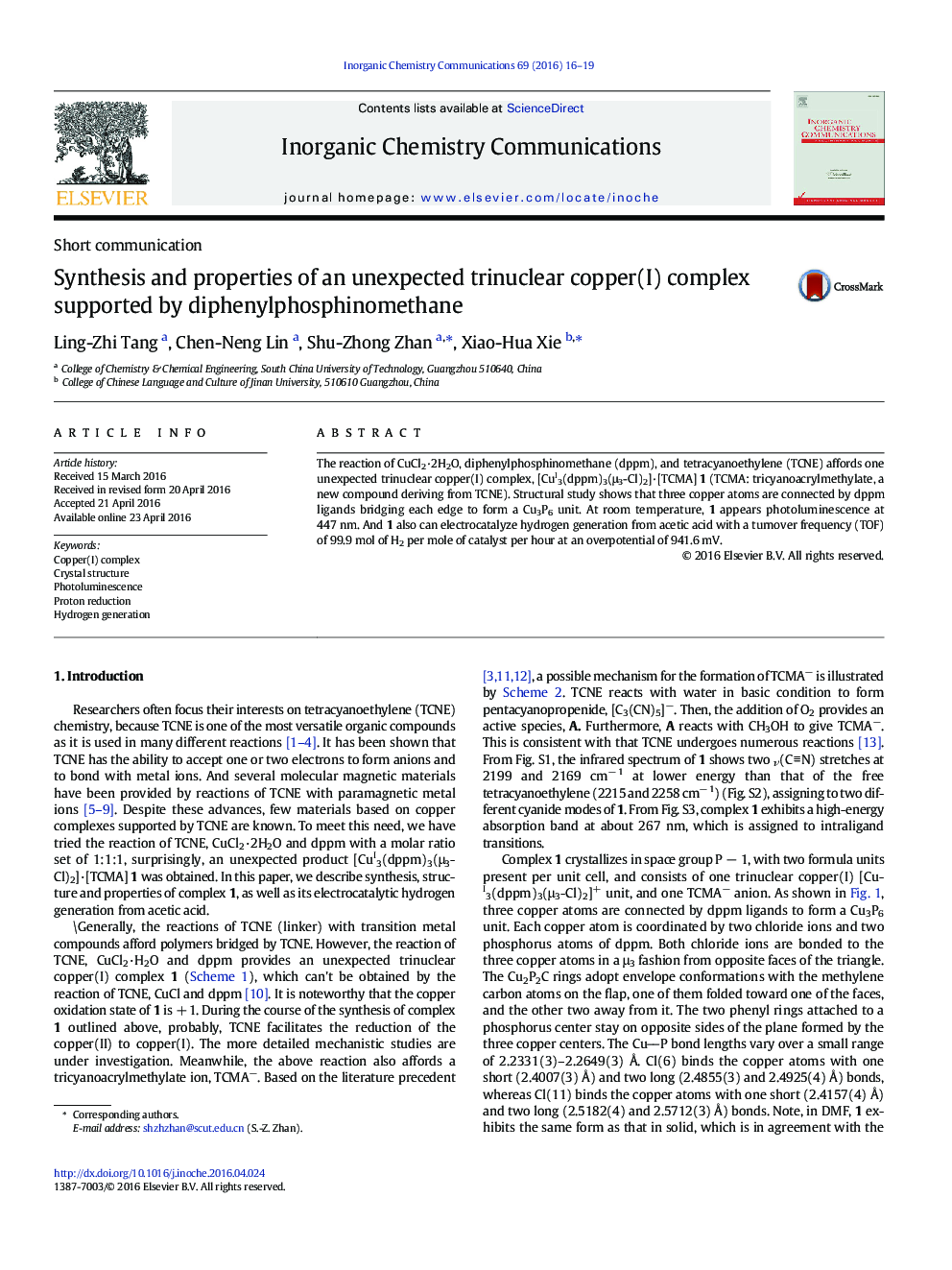| Article ID | Journal | Published Year | Pages | File Type |
|---|---|---|---|---|
| 1303151 | Inorganic Chemistry Communications | 2016 | 4 Pages |
•Reaction of CuCl2·2H2O, dppm and TCNE affords a copper(I) complex [Cu3(dppm)3(μ3-Cl)2]·[TCMA] 1.•Three copper atoms are connected by dppm ligands bridging each edge to form a Cu3P6 unit.•1 can catalyze hydrogen evolution from acetic acid.•1 exhibits photoluminescence behavior at room temperature.
The reaction of CuCl2·2H2O, diphenylphosphinomethane (dppm), and tetracyanoethylene (TCNE) affords one unexpected trinuclear copper(I) complex, [CuI3(dppm)3(μ3-Cl)2]·[TCMA] 1 (TCMA: tricyanoacrylmethylate, a new compound deriving from TCNE). Structural study shows that three copper atoms are connected by dppm ligands bridging each edge to form a Cu3P6 unit. At room temperature, 1 appears photoluminescence at 447 nm. And 1 also can electrocatalyze hydrogen generation from acetic acid with a turnover frequency (TOF) of 99.9 mol of H2 per mole of catalyst per hour at an overpotential of 941.6 mV.
Graphical abstractThe reaction of tetracyanoethylene (TCNE), CuCl2·2H2O and diphenylphosphinomethane (dppm) provides a trinuclear copper(I) complex [CuI3(dppm)3(μ3-Cl)2]·[TCMA] 1 (TCMA: tricyanoacrylmethylate).Figure optionsDownload full-size imageDownload as PowerPoint slide
